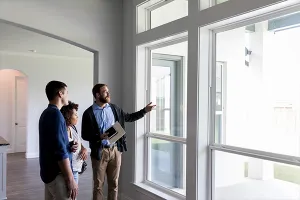Size of the Commercial Building Sector
The Energy Information Administration’s Commercial Building Energy Consumption Survey (http://www.eia.gov/consumption/commercial/) has recently provided updated estimates of total U.S. commercial real estate space. The types of commercial building transactions frequently handled by REALTORS®--office buildings, retail space, warehouses, and lodging—accounted for approximately 48 Billion square feet of space in 2015.

Online retailing appears to be driving the growth of warehouse space, accompanied by increased use of flex space for offices. Increased affluence appears to be associated with increased lodging space; vacations and trips are increasing space demands. For the office sector, square feet of space use per person is declining, but the economy is increasingly office and services oriented, accounting for office space growth.
Building Characteristics
The commercial sector is essentially bifurcated between large buildings—generally over $2.5 million in value; and smaller buildings under $2.5 million in value—small strip malls, stand-alone convenience stores, etc. Although the bulk of commercial space is in large buildings, by number the majority of commercial buildings are small.
- Approximately 70 percent of commercial buildings are smaller buildings--less than 10,000 square feet in size and generally valued well under $2.5 million. These are the buildings typically frequented on a daily basis by people on “Main Street,” –retail, small offices, strip shopping centers--in contrast to larger buildings selling over $2.5 million—multi story office buildings, office parks, large warehouses, etc.
- Financing for “Main Street buildings” may typically be obtained through local sources, in contrast to national sources (such as major banks, pension funds, insurance companied, etc.) for large buildings.
- For “Main Street” buildings, local investors may be the owners, rather than larger financial intermediaries.
Trends
During the Great Recession the commercial real estate sales declined in price and volume very significantly. Larger buildings were first to start the recovery in terms of price and sales volume. In the past year, the “Main Street” small buildings have started to catch up as noted in NAR’s 2015 second quarter commercial survey for smaller buildings:
- Sales volume rose 9 percent from a year ago, with the average transaction increasing from $1.7 million in Q1.2015 to $2.0 million in Q2.2015.
- With inventory shortage topping the list of current challenges, commercial prices accelerated, rising 7 percent year-over-year.
- Capitalization rates averaged 7.5 percent nationally, across most property types, an 85 basis-point decline from the same period in 2014.
- Perceived pricing differences between buyers and sellers remained the second most significant concern for NAR members.
In comparison, based on data from Real Capital Analytics (RCA)—for larger buildings (deals of $2.5 million and above):
- Sales volume in the second quarter of this year rose 23 percent, totaling $118 billion.
- Prices for properties rose 3.1 percent on a yearly basis.
- Cap rates declined 30 basis points from the second quarter 2014, averaging 6.7 percent across RCA’s property types.
As the Small Balance Advocate indicates, strong price gains and rising sales are now being experienced by investors in smaller buildings. While a large performance spread characterized the relationship between small and large markets’ sales and price growth in the first five post-recession years, market indicators have been converging over the past couple of years. Cap rates remain one indicator where smaller buildings and markets continue to carry a premium, given the underlying comparative risk. In short, small buildings are now performing approximately as well as larger buildings.
What Does this Mean for REALTORS®?
The national news continues to have articles questioning whether both residential and commercial real estate markets will continue to expand. Sales, prices, and trends for residential real estate continue to deliver good news. For commercial buildings the data seem to indicate that the market for both small and large commercial buildings is in an upswing, which should continue if job growth and GDP continue their trends as predicted by most economists.
Sales of large buildings totaled $430 billion in 2014, and small building sales appear to have been in the neighborhood of $50 billion in recent years. Although all real estate is local—which means that general conclusions will not necessarily hold for each city, it appears that the small-cap market is now in substantial recovery.








